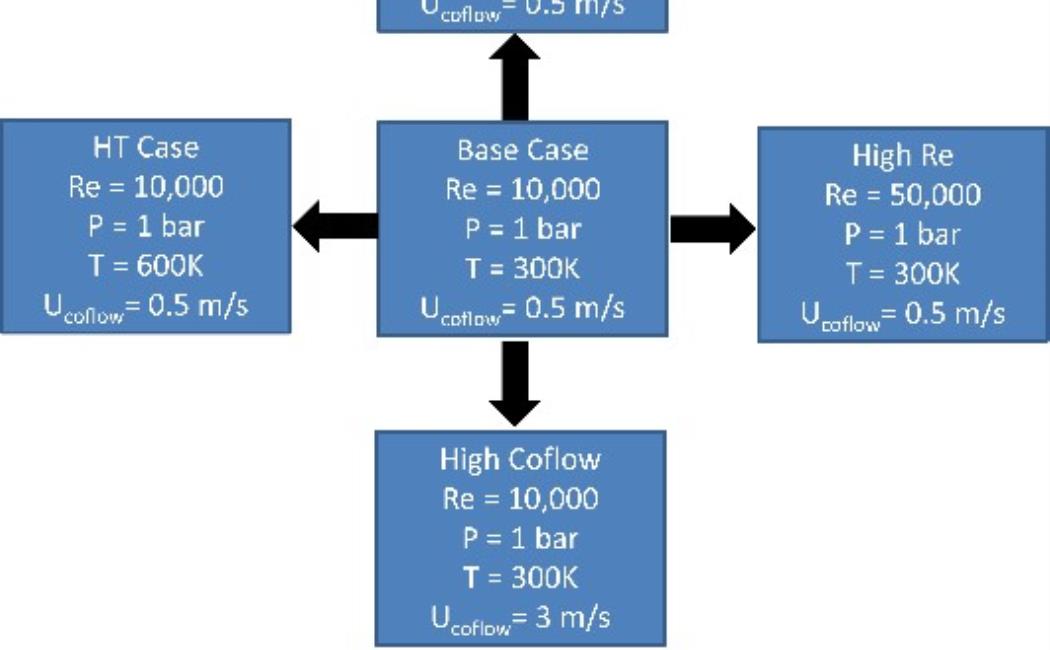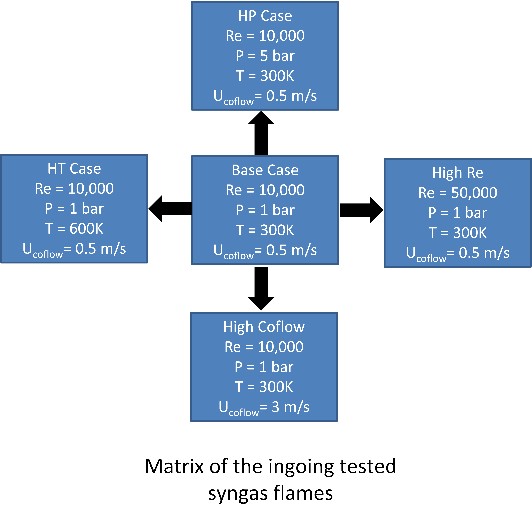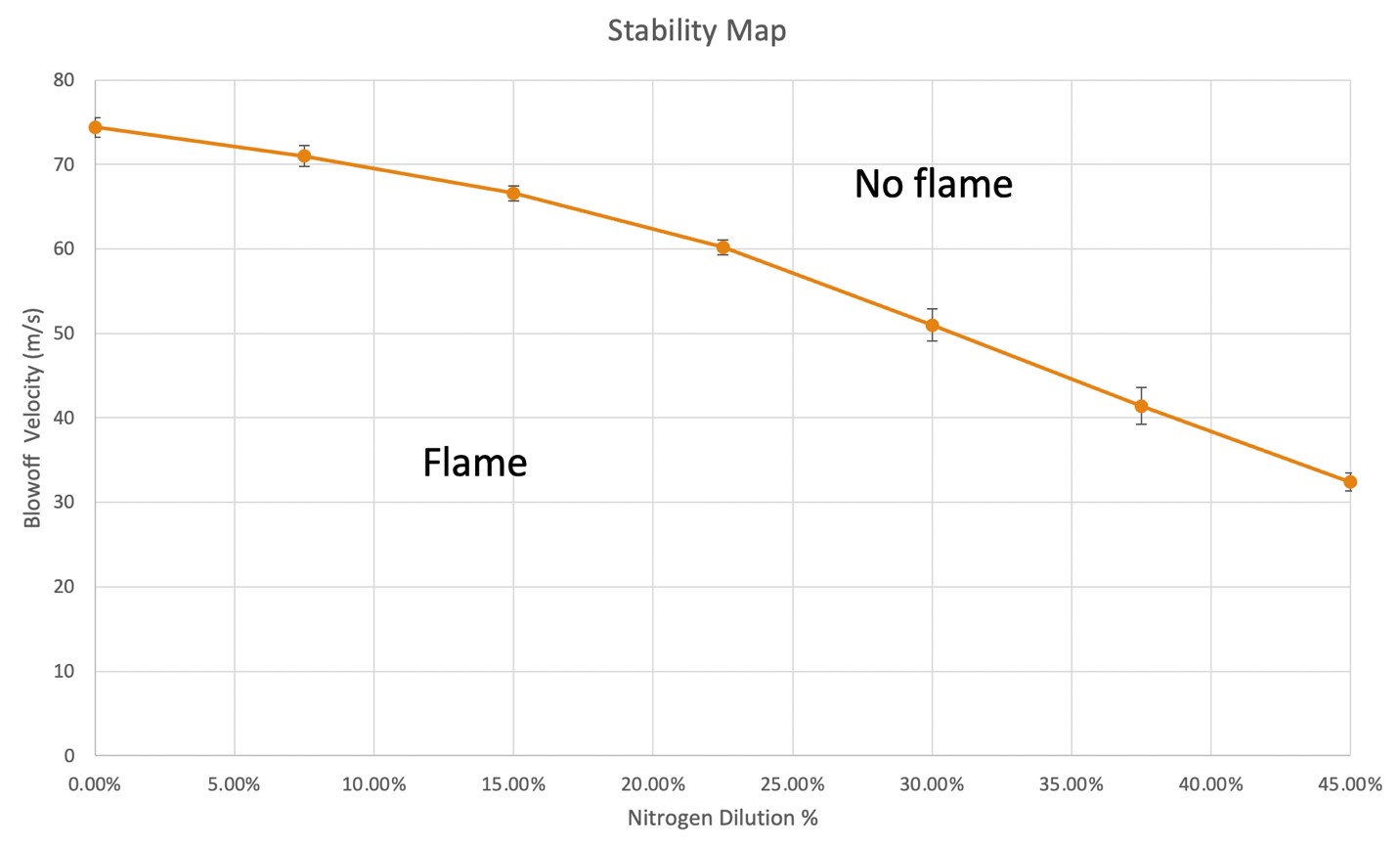


High temperature, high pressure, and high Reynolds number target flames are almost nonexistent in the literature. However, these flames closely mimic the real-life combustion process found in practical devices today. This study aims to unveil the mountain of unknown data for high pressure, high-temperature in syngas jet flames. The matrix of the intended tested flames is shown in Fig. 2.

Syngas is a mixture of mainly hydrogen and carbon monoxide with other gaseous species such as carbon dioxide, water vapor, nitrogen, and other hydrocarbons that are part of the process of steam reforming when making synthetic natural gas (SNG) or the production of ammonia and methanol. Syngas flames have been studied extensively in the literature due to their potential as an alternative fuel to hydrocarbons. Fundamental, studies have been conducted on flame speed, ignition delay time, and chemical kinetics [1-5]. Syngas is a well-understood fuel with a known reaction mechanism, which makes it an ideal candidate for the TNF workshop. Furthermore, syngas offers more complexity than pure hydrogen, but less soot which is ideal for advanced laser-based diagnostic techniques. One of the earliest flames studied by the TNF workshop is the Sandia syngas flame, denoted by “chnA”, studied by Barlow et al. [6]. This flame was studied under atmospheric conditions and further probed under high-pressure conditions by Boyette et al. [7]. Boyette concluded that pressure decreases the OH layer thickness of the turbulent jet flame, similar to laminar flames but at a slower rate. This flame will be a good candidate for study in the HTPCD, due to the already established baselines both at atmospheric and elevated pressure conditions. The combined effect of elevated pressure and temperature will give more insight into practical conditions. The plan is to qualitatively investigate the flame structure of the leading edge of the turbulent syngas jet flames with a High-Speed OH-PLIF diagnostic. We will investigate Syngas mixtures to pressure up to 5 bar, with varying temperatures of the Coflow ranging from 500-1000K. Below are our baseline cases at atmospheric conditions with the flame appearance at different nitrogen dilution ratios and the flame stability as well.

Figure 1. Effect of Nitrogen Dilution on Syngas Jet Flame Appearance at 80% of Blowout Velocity at atmospheric conditions.

Figure 2. Stability of Syngas Flames at different nitrogen dilution percentages at atmospheric conditions.